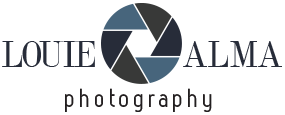Hospitality Tech’s Next Chapter: AI, Data, and Human Connection
Ahead of Future Hospitality Summit – FHS World in Dubai, technology leaders reveal how AI, automation, and personalisation are driving innovation in hospitality
Image: c. https://www.facebook.com/buscandoamona
If your pet goes missing during air travel, you cannot claim more compensation than for lost luggage, the European Court of Justice ruled. Judges at the court in Luxembourg said a dog transported by air belongs in the same category as suitcases and bags.
The ECJ, Europe’s highest court, was asked to intervene after a dog called Mona was lost during a journey from Buenos Aires to Barcelona, on an Iberia flight in October 2019. Mona was to travel in the cargo hold but escaped on the way to the plane, and despite an intense campaign on social media launched by the owner, Felicísima, she was never recovered.
Felicísima sought €5,000 (£4,340) for “non-material damage” from the airline before a Spanish court in a court case that lasted six years. Iberia accepted liability but cited the Montreal Convention, which governs international air transport of passengers, luggage and cargo, and sets liability limits for checked baggage.
The Spanish court asked the EU court to intervene, and the EU judges ruled that the term “passengers” refers to human travellers, meaning pets cannot be considered passengers. Compensation for the loss of a pet is therefore limited to the rules applicable to checked baggage.
Felicísima said she would never give up her search, saying it was “a disgrace” if someone in Buenos Aires had taken her dog and claimed it as their own. “Who has Mona, knowing that she is ours; knowing the pain we have felt?” she bemoaned in a Facebook post.
The case sets a precedent for anyone travelling with pets who do not make a special declaration about the contents of the pet crate, and the animal is lost.
The girl’s lawyer in Madrid, Carlos Villa Corta, said
“I believe that a great opportunity has been missed to continue raising awareness of the rights of animals and the people who care for them. Ultimately, the ECJ considers that pets do not deserve special or enhanced legal protection compared to a simple suitcase.”
The judgment also noted that the liability of an airline for lost baggage could be determined by any special declaration on contents, which did not happen in this case.
The ECJ said:
“The Montréal convention clearly refers to persons and baggage. It therefore follows from the clear wording of this provision that the term ‘persons’ covers ‘passengers’, such that a pet cannot be considered a ‘passenger’. It must therefore be considered that, for the purposes of air transport, a pet falls within the concept of ‘baggage’ and compensation for damage resulting from its loss during such transport is subject to the liability regime laid down for baggage.”
According to Spanish reports on the original case, the court ruled that because a special declaration about the animal was not made before the flight, Felicísima was entitled to only €1,578.82.
In a statement, the ECJ said:
“The fact that the protection of animal welfare is an objective of general interest recognised by the European Union does not prevent animals from being transported as ‘baggage’ and from being regarded as such for the purposes of the liability resulting from the loss of an animal.”
The Montreal Convention sets the amount of compensation in a currency called Special Drawing Rights, and for lost luggage, it is 1,519 Special Drawing Rights. This is currently equivalent to around €1,800.
The post Pets on flights can be classed as baggage, say EU court appeared first on The Travel Magazine.
One big challenge when shooting in in the field is understanding how to make sense out of chaos when confronting complicated scenes. Today’s eye-opening tutorial takes this approach to the extreme by exploring the power of minimalist photography.
The dynamic concept involves reducing the composition of a photo to one impossible-to-ignore essential element. This thoughtful approach will change the way you shoot whether the subject at hand is an expansive vista, abstract details, or intimate environmental portraits. You’ll pick up some very helpful post-processing tips as well.
Instructor Andy Gibbs is a Canadian pro whose shooting and editing lessons share his passion for nature and landscape photography while delving deep into light, composition, and the art of capturing breathtaking moments. In the next 14 minutes you’ll learn how to view the world differently and stop complicating your images.
Gibbs puts it like this: “In this video I explore the power of simplicity and reduction in photography, and how eliminating distractions can help you create cleaner, more substantial, and more impactful images.” The video begins with a display of several inspirational photographs that perfectly illustrate the concept without words and will get you in the mood for the practical tips that follow.
He acknowledges the temptation to include everything in the frame—from mountains in the background, vivid flowers in the foreground, a dramatic sky overhead, and water reflections in between. Yet, he insists that “sometimes the strongest photographs aren’t about adding more—they’re about taking things away.”
Gibb’s encourages you see thing differently than you have in the past, and then then provides great advice for deciding what not to include in a shot in a way that will help you tell a clearer story. So if you’re concerned about images that are too busy or lack focus, this minimalist approach is the video for you.
There’s plenty more where this comes from, so be sure to visit Gibbs’ instructional YouTube channel and explore.
And don’t miss the recent tutorial we shared from another notable expert who demonstrates an overlooked camera metering mode that protects highlight details in nature, wildlife, and landscape photographs. No more clipping!
